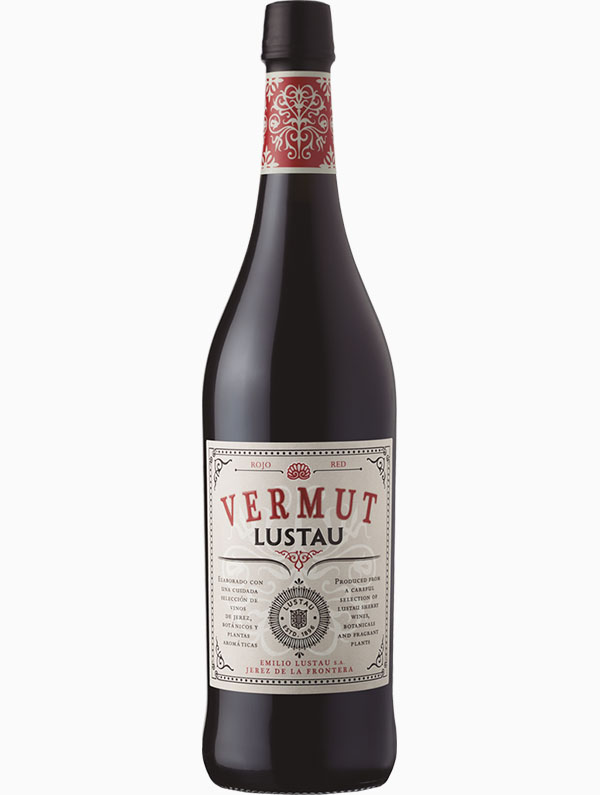It’s that time of year again, when the cold starts to break and warmer weather gradually begins to grace us with its presence.As the seasons change, we often seek out and welcome food and drink that reflects our surroundings.When things start to heat up, our desire for beverages that quench our thirst and cool us off grows exponentially with the increase in temperature.In a world filled with slushies and punches, there is one classic cocktail that has been helping us usher in Spring and Summer for centuries: Sangria
COCKTAIL: VERMOUTH SPRITZ
Full Ingredients list
-
Yield: 1 drink
-
2 ounces sweet vermouth (Lustau Rojo)
-
4 ounces soda water (good quality)
-
Wedge of citrus or olives, for garnish (optional)
Recipe author: Rosie Schaap

This story tells us that wine and cheese is a classic combination that goes back many centuries, but without proper knowledge, it can become a rather tricky experience… If you’re a beginner, it might seem daunting to decide exactly which wine to choose for which cheese. Because not all wines will go well with any cheese and vice versa. Generally, more acidic wines (many dry whites) pair well with the softer cheeses while the wines with tannin (dry reds) seem to favor the harder cheeses, but it is not that simple either. That’s because there isn’t just one kind of wine and one kind of cheese. Cheeses vary in moisture content, fat content, texture, and flavor. Wines, too, vary in acidity, sweetness, body, and structure, among other qualities.
Typically, the more cheeses you have the more unlikely it is that one single wine (or drink) will go with them all. One wine to rule them all? It’s fun to open a range of bottles to sample with your cheese assortment, but if you must pour a single wine with a mixed plate of cheeses the safest bet would probably be something off-dry and made from white grapes. Quality sweet wines are some of the most traditional selections to go with many kinds of cheese as the sweetness is a great match with the saltiness in most cheeses, but high levels of sugar in the wine can also overpower some more delicate cheese. Typically, the sweeter the wine, the stinkier and stronger the cheese must be! That is why we are suggesting this off-dry, subtle cocktail (below) that will surely respect and enhance the flavors of most of your favorite cheeses.
READY TO PUT TOGETHER A NICE CHEESEBOARD?
One theory behind a properly curated cheeseboard is to offer cheeses of different textures, flavors, and shapes so that it looks attractive, includes a variety of tastes and everyone can find a cheese they like. Sound good?
If you don’t have an intolerance to dairy, try to find the best, artisan-made examples, using quality [raw?] milk and offering great depth of flavor, balance, and texture, usually produced in their original regions from animals allowed to graze outdoors in pastures. And avoid the highly processed, industrial ones. According to this recent study, these are America’s 15 favorite cheeses. Of course, having 15 different kinds of cheese at once may sound like a bit too much, so let us name a few popular ones that we think may please a large audience: Cheddar, Parmigiano-Reggiano, goat, blue, Limburger, sheep, Provolone and Brie. Hey, and don’t forget about the cheeses’ serving temperature, never too cold!
Cheese loves fruit and nuts. There’s a reason we adorn cheese plates with fresh fruits, dried fruits, and nuts. The juicy, tangy fruits go well with young cheeses like Brie. Sweet-dried fruits are wonderful with salty cheeses like Stilton. Buttery, bitter nuts are tasty with rich Cheddar. The bread or crackers you choose, the kind of fruit – fresh or dried – nuts, olives, and cold meats can all help a wine (or drink) to pair well. Make your cheeseboard look fantastic by adding some of these ingredients!
VERMOUTH ROJO SPRITZ
Lustau Vermut Rojo is an incredible product, the result of the combination of two quality sherry wines; one is a sweet and velvety Pedro Ximénez, and the other a dry and nutty Amontillado – aged separately in their own soleras. The wines are then used to macerate more than ten botanicals and aromatic herbs like gentian, sage, absinthe, coriander, and orange peel. Each botanical macerates separately for optimal aroma extraction. The master blender then expertly combines the infused wines to obtain a perfect blend. Earthy, nutty, herbal, dried fruit, citrusy, and velvety finish with just the right amount of sweetness. When mixed, this simple and refreshing spritz will make it a fabulous option to pair with your own selection of cheeses.
HOW TO PREPARE A VERMOUTH SPRITZ
- Fill a highball or large wine glass with ice.
- Add the vermouth and top up with the soda water.
- Garnish, if desired, with a fat wedge of lemon, orange, or grapefruit, and/or a nice olive or two.
- Want something stronger? Add a slug of gin.